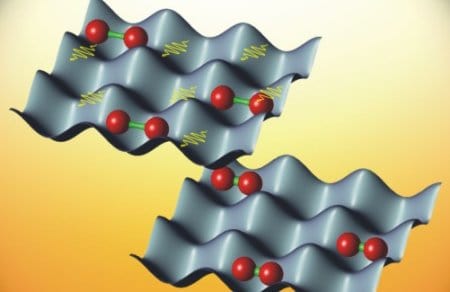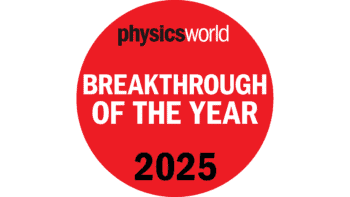
The weakly bound rubidium molecules (upper image) are transferred into the rovibrational ground state with a STIRAP laser pulse. (Courtesy: Austrian Academy of Sciences).
By Hamish Johnston
Rovibrational ground states are a bit like buses — you wait a long time for nothing and then three come along one after another.
A few weeks ago, we reported on the first realization of a quantum gas of ultracold polar molecules by Deborah Jin, Jun Ye and colleagues at JILA in Boulder, Colorado.
The big challenge in creating the 350-nK gas was to put the potassium-rubidium molecules into their “rovibrational” ground state, where they have the smallest amount of rotational and vibrational energy allowed by quantum mechanics.
Normally, the molecules heat up the gas when they give up their excess rovibrational energy. Jin and Ye avoided this by using lasers to get the molecules to give up their energy as light that exits the gas without heating it — a technique called “stimulated Raman adiabatic passage” (STIRAP).
Now, Rudi Grimm and Johannes Hecker Denschlag at the Austrian Academy of Sciences have used the same technique to create an ultracold gas of rubidium-rubidium molecules in the “triplet” rovibrational ground state (Phys. Rev. Lett. 101 133305). Such a triplet state is interesting because the molecules have large magnetic moments, and therefore the gas could be useful as a “quantum simulator” of solid magnetic materials.
In the same issue of Physical Review Letters, Matthias Weidemueller and colleagues at Germany’s University of Freiburg explained how they created an ultracold gas of lithium-caesium molecules in the rovibrational ground state (Phys. Rev. Lett. 101 133304).
Like the potasium-rubidium, lithium-caesium molecules have electric dipole moments — which means that they could someday be used as quantum bits that are controlled by the simple application of an electric field.



